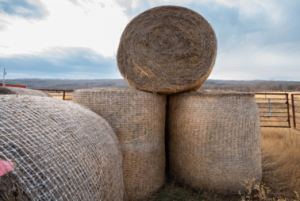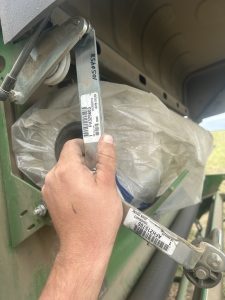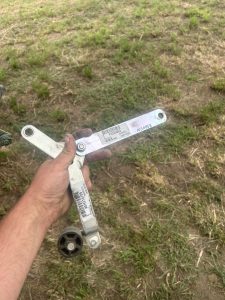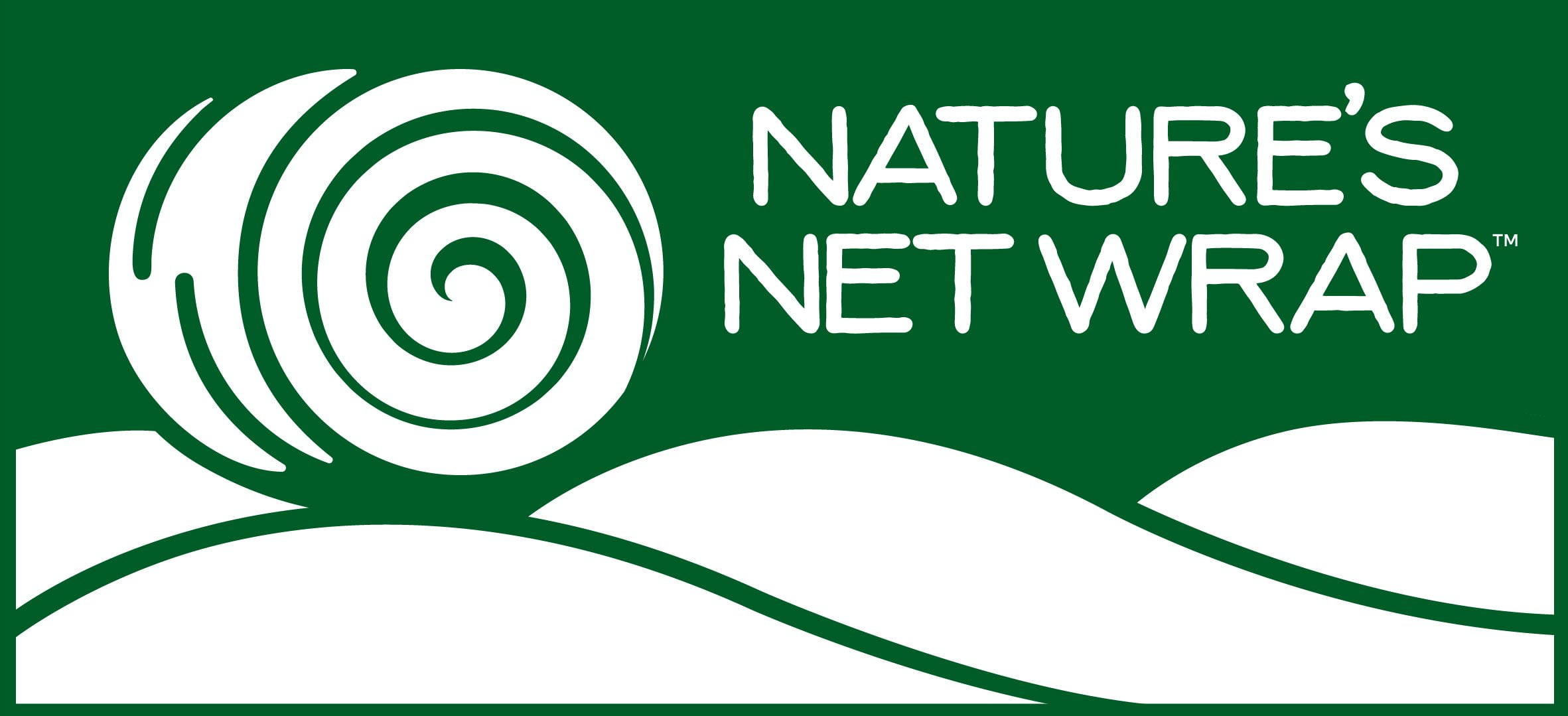Our net wrap is made out of biopolymers that are sourced from plant based renewable resources.
On our ranch in Alberta, Canada our net wrap has maintained structural integrity for over 12 months. We are currently testing our net wrap through out various regions and climatic zones in North America.
- We suggest that you start with what you are normally using for your current conditions and materials that you are baling.
- Our experiences align with industry standards of 2¼ wraps for hay and 3 ¼ wraps for straw and other forages.
- You many need to adjust slightly for your local conditions and materials.
Our test results indicate water and sunlight have minimal impact on our net wrap.
For up to 12 months farmers and ranchers can stack their bales however they normally do. For storage over 12 months we recommend stacking the bottom row of bales on end on the ground. The bales stacked on top should be on their side (net wrap side down). This is referred to as “mushroom stacking” as shown in the picture.

There are no modifications required for Case IH / New Holland Balers. Initial indications are no modifications are required for other makes of balers however further testing is ongoing in 2024. Many models of John Deere, AGCO, Vermeer, and Kubota balers have run our net wrap over the last 2 years.
Case IH / New Holland balers:
- The two settings to focus on are the duckbill and tension.
- Duckbill Setting and Tension combination’s we have found worked well together so far.
- Duckbill Setting #1 – Tension set to 70-75 lbs (Pull Test)
- Duckbill Setting #2 – Tension set to 90-95 lbs (Pull Test)
- Duckbill Setting #3 – Start tension low and slowly increase to find correct tension
- Please call us if you have any questions or need help troubleshooting.
John Deere balers:
- For John Deere 560, 561, 568 and 569 balers we recommend removing both the left & right tension arms (pictured). By doing this it has helped set the correct tension without making other changes.
- Please call us if you have any questions or need help troubleshooting.


- Yes on-farm composting is a great way to dispose of our product. For example, a manure pack is a great way to compost our net wrap.
- As well, we have had multiple customers who use bale processors for bedding their pens reach out to us to let us know that when they cleaned out their pens and spread manure they did not find any of our net wrap.
- The BPI Certification process is rigorous and ensures that items can be cycled back into the soil safely at a commercial composting facility. This is done through testing to ASTM standards and applying additional restrictions on carcinogens and fluorinated chemicals.
- BPI third party certification distinguishes the manufacturers and brands that make products that comply with scientific standards from those that do not. When looking at a product that is self-declared to be compliant by the manufacturer or brand, a consumer or composter will not know what standards have been met for the product. The third-party certification process ensures that correct components are used and that the correct tests have been conducted to ensure safety for the environment.
No, our net wrap has passed 3rd party eco toxicity tests to ensure that no harmful chemicals are released. Below are all the standards that we have met:
- the requirement on volatile solids as defined by EN 13432 (2000), ASTM D6400 (2023), CAN/BNQ 0017-088 (2010) and ISO 18606 (2013);
- the requirements on heavy metals as defined by EN 13432 (2000), ASTM D6400 (2023) and CAN/BNQ 0017-088 (2010);
- the requirement on fluorine as defined by EN 13432 (2000).
Studies are ongoing. We recommend removing our net wrap prior to mixing rations or directly ring/feeding livestock.
Our net wrap is manufactured in the USA.
